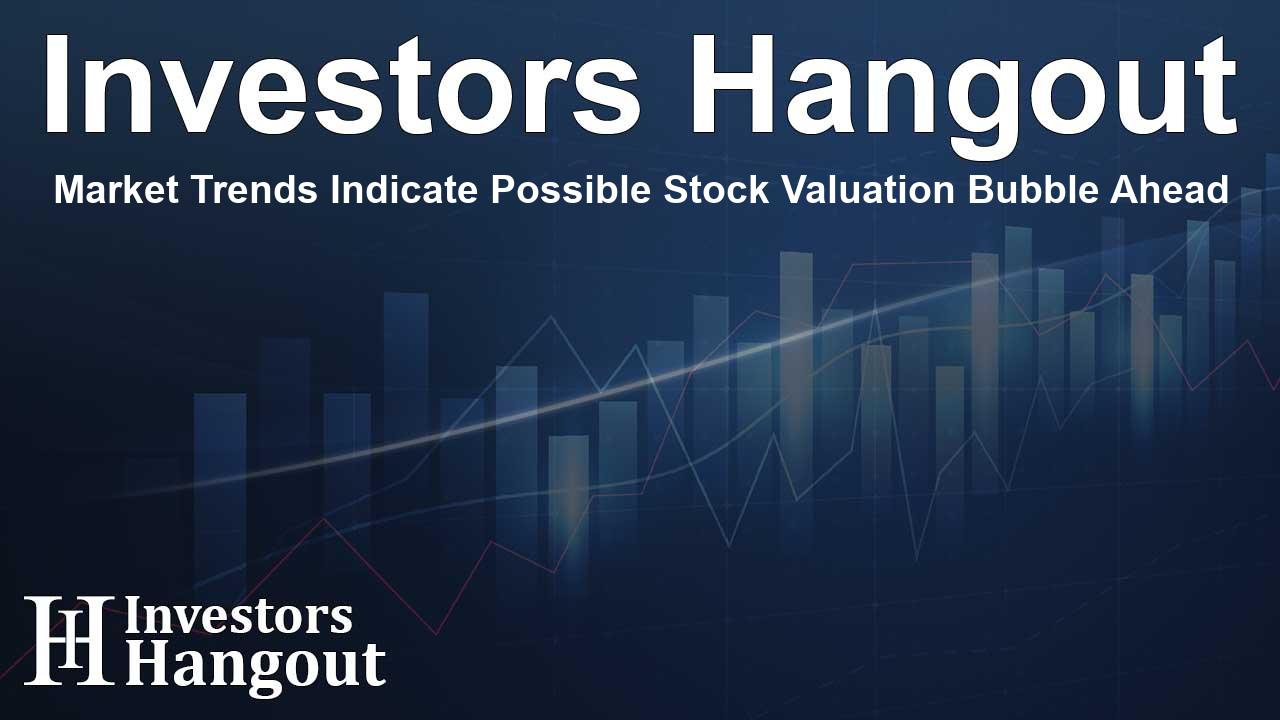Market Trends Indicate Possible Stock Valuation Bubble Ahead

Market Conditions Raising Concerns of a Bubble
Analysts are sounding alarms regarding the stock market as numerous indicators suggest the possible formation of a new bubble. Many experts are pointing to speculative activity, primarily in the tech sector, resembling the lead-up to previous financial crises.
Speculative Activity at Record Levels
Recent insights from analysts indicate that the current level of speculative trading surpasses those seen before major market downturns. For instance, the current environment mirrors the exuberance experienced during the 1999-2001 tech boom and the more recent 2020-2021 bubble period. This surge in trading activity is particularly strong among unprofitable and penny stocks, suggesting a market that is increasingly detached from fundamental valuations.
Market Influencers and Trading Trends
Goldman Sachs has drawn attention to their Speculative Trading Indicator, which has reached alarming heights. Analysts report that this indicator is now the highest it has been outside of previous market bubbles, indicating a growing appetite for risk among investors. This trend seems to be supported by an influx of millennial and Gen Z investors entering the market, many of whom are actively trading via mobile platforms.
Moreover, data shows that call options now represent a significant portion of trading activity, accounting for over 60% of all options transactions. Such a concentration in options trading could pose risks if volatility were to spike suddenly.
Major Firms Weigh In on Market Predictions
Leaders from various financial institutions, including Bank of America and J.P. Morgan, have echoed these concerns. They highlight that relaxed monetary policies and deregulation are factors enabling retail trading to flourish, which historically has led to inflated market valuations.
Sector-Specific Insights
Research from Apollo identifies that AI-focused stocks have driven evaluations to heights not seen since the tech boom. Major companies in this space, such as Nvidia Corp. (NASDAQ: NVDA) and Meta Platforms Inc. (NASDAQ: META), have registered significant price-to-earnings (P/E) ratios, with implications that could position them at risk if the expected growth does not materialize.
The concentration of market performance among a handful of high-flying tech stocks raises additional flags. Currently, almost 40% of S&P 500 performance is tied to just ten companies. This dependency creates potential vulnerabilities if market enthusiasm wanes.
Future Outlook and Market Sentiment
Ed Yardeni, a market strategist, has shared a more tempered perspective. He posits that while exuberance is palpable, the risk of a massive downturn remains limited due to robust consumer health and substantial consumer purchasing power. Older generations of investors have accumulated wealth that has continued to bolster household spending.
Conclusion: Preparing for Market Volatility
As the current atmosphere fosters heightened speculation and volatility in trading, investors must stay cautious. Experts recommend close monitoring of economic indicators and market sentiment. Those involved in trading AI and tech stocks, particularly large-cap names like Nvidia and Meta, should consider potential risks that accompany elevated valuations. Adopting strategies that incorporate risk management could prove vital in navigating this uncertain landscape.
Frequently Asked Questions
What are the signs of a potential stock market bubble?
Indicators of a possible bubble include surges in speculative trading, overvaluations in key sectors, and heightened trading activity among retail investors.
Why are tech stocks under scrutiny?
Tech stocks are scrutinized due to their high market valuations and the concentration of market performance in a few companies, creating risks if investor sentiment shifts.
How does monetary policy affect market conditions?
Relaxed monetary policy can lead to increased liquidity and speculative trading, potentially inflating asset values beyond sustainable levels.
What should investors do in this environment?
Investors may consider employing risk management strategies and diversifying their portfolios to mitigate the effects of market volatility.
How have retail investors changed the trading landscape?
Retail investors, particularly younger generations, have leveraged technology for trading, impacting market dynamics and increasing speculative behavior.
About The Author
Contact Kelly Martin privately here. Or send an email with ATTN: Kelly Martin as the subject to contact@investorshangout.com.
About Investors Hangout
Investors Hangout is a leading online stock forum for financial discussion and learning, offering a wide range of free tools and resources. It draws in traders of all levels, who exchange market knowledge, investigate trading tactics, and keep an eye on industry developments in real time. Featuring financial articles, stock message boards, quotes, charts, company profiles, and live news updates. Through cooperative learning and a wealth of informational resources, it helps users from novices creating their first portfolios to experts honing their techniques. Join Investors Hangout today: https://investorshangout.com/
The content of this article is based on factual, publicly available information and does not represent legal, financial, or investment advice. Investors Hangout does not offer financial advice, and the author is not a licensed financial advisor. Consult a qualified advisor before making any financial or investment decisions based on this article. This article should not be considered advice to purchase, sell, or hold any securities or other investments. If any of the material provided here is inaccurate, please contact us for corrections.
